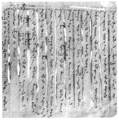Outer Mongolian Revolution of 1911 facts for kids
The Outer Mongolian Revolution of 1911 was a time when Outer Mongolia decided it no longer wanted to be part of the Qing dynasty. Instead, they wanted to rule themselves. This big change happened at the same time as another major event in China, called the Xinhai Revolution.
Today, Outer Mongolia is the country we know as Mongolia. It's important to remember that it's different from Inner Mongolia, which is still a part of China.
Contents
Why Did Mongolia Want to Be Free?
For a long time, Mongolia was part of the powerful Qing dynasty. But by the early 1900s, things were not going well. Mongolia became very poor. The Qing dynasty itself was also running out of money, partly because of a big conflict called the Taiping Rebellion (1850–1864).
The Qing government even took many animals from the Mongols to feed people in other parts of China. This made the Mongols very unhappy.
The Qing dynasty was started by the Manchu people, who were not Han Chinese. They tried to keep Manchus and Mongols separate from Han Chinese. For example, Han Chinese were not allowed to live in Mongolia, and Mongols were not allowed to leave Mongolia. Mongols were also not supposed to speak Chinese.
After losing a war called the First Sino-Japanese War in 1895, the Qing dynasty started to get weaker.
Later, events like the Boxer Rebellion and Japan's win over Russia in 1905 made many Chinese people hopeful for change. So, the Qing government started new plans called the "New Policies" (Xinzheng).
One main goal of these New Policies was to move more Han Chinese people into Outer Mongolia. This was meant to show Russia that Mongolia still belonged to China. The Qing leaders thought this would act like a "shield" to protect their land.
Between 1901 and 1910, new laws were passed. These laws allowed Han Chinese to settle in Mongolia, permitted marriage between Han and Mongol people, and let Mongols speak Chinese.
In 1910, the Qing government sent Sando to rule Mongolia from Ulaanbaatar. There were plans to send many Han farmers to Mongolia. In January 1911, an army was put together, and half of it was Mongol. The Mongols did not like these changes. They also disliked the new taxes. They were very poor and wanted to continue their traditional life as nomads and horseback riders, not become farmers.
The First Steps Towards Independence
Prince Tögs-Ochiryn Namnansüren was a key leader. He convinced a very important religious leader, the Jebstundamba Khutukhtu, to support the idea of Mongolia becoming independent. Prince Namnansüren and another leader, Qin Wang (Mijiddorjiin Khanddorj), then asked Russia for help.
The Russian government in Saint Petersburg heard their request. Russia wanted Outer Mongolia to be a buffer state – a neutral area between Russia and Japan. So, Russia sent some troops to help.
In 1911, the Qing government in China was overthrown during the Xinhai Revolution. While China was busy with its own problems, the Mongols saw this as the perfect chance to break away. On November 30, 1911, Mongol and Russian soldiers surrounded Kulun (Ulaanbaatar).
On December 5, Khanddorj officially declared Mongolia's independence. In January 1912, the Qing governor of Uliastai in western Mongolia escaped with the help of Russian Cossack troops. However, the governor of Khovd decided to fight back, hoping for support from Xinjiang. But his forces were defeated. In August 1912, the Khovd governor also left the country, protected by Cossacks.
After gaining independence, Outer Mongolia wanted to unite with Inner Mongolia (a movement called Pan-Mongolism). Some small uprisings happened in Inner Mongolia. For a short time, Outer Mongolia controlled parts of western Inner Mongolia. But then, the new Chinese government in Beijing also started fighting in Inner Mongolia. Outer Mongolia began to run out of supplies. Russia also did not want to support Outer Mongolia further or start another war. Because of this, China kept Inner Mongolia. The year-long conflict was very difficult for Inner Mongolia. It is remembered as the Year of the Ox rebellion.
On November 3, 1912, Russia signed a deal with Mongolia. Russia agreed to let Mongolia be autonomous (meaning it could govern itself) in exchange for mining rights in Mongolia. China was not happy about this. So, on September 18, 1913, Sun Baoqi signed a new agreement between China and Russia. China agreed not to send troops into Mongolia and recognized the Russian-Mongol deal. In return, Russia recognized that China had suzerainty over Mongolia. This meant China's power over Mongolia changed from full control (sovereignty) to a weaker form of control (suzerainty).
Images for kids
See also
 In Spanish: Revolución mongola de 1911 para niños
In Spanish: Revolución mongola de 1911 para niños








